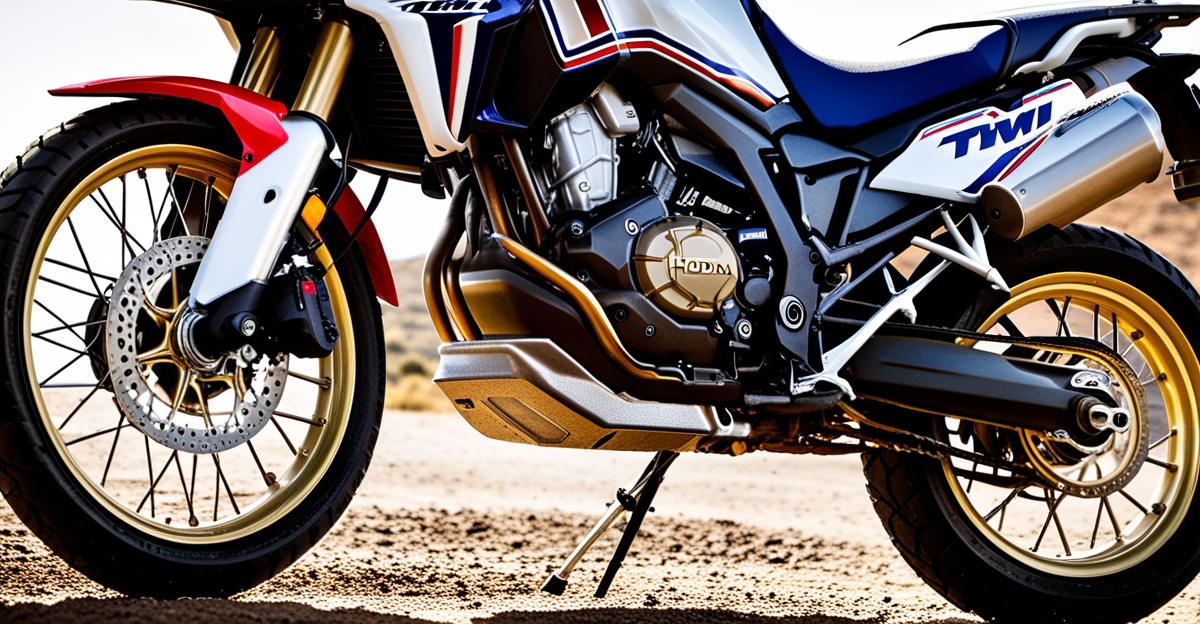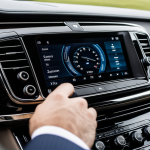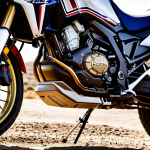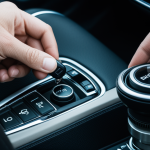Essential Tools and Safety Precautions for Brake Fluid Maintenance
Ensuring proper Honda Africa Twin brake fluid tools at hand is crucial for efficient and safe brake maintenance. Common essentials include a brake fluid tester to check fluid condition, a clear plastic tube for bleeding air from the lines, a wrench to open bleeder valves, and a clean container to catch old fluid. Using the correct tools prevents damage to delicate motorcycle components and allows for precise work.
Safety precautions are especially important when handling brake fluid, as it is corrosive and can harm skin, eyes, and painted surfaces. Always wear chemical-resistant gloves and safety goggles to protect yourself during maintenance. Working in a well-ventilated area helps avoid inhaling fumes and reduces contamination risks.
Also to see : Mastering Clutch Lever Free Play: Expert Tips to Adjust Your Suzuki SV650 Like a Pro
Preparing the workspace is part of brake maintenance essentials. Covering the motorcycle’s body with absorbent cloths shields the paint from spills. Also, keep brake fluid containers tightly sealed when not in use to avoid moisture absorption, as contaminated fluid reduces braking efficiency. Together, these safety precautions and tools promote responsible, professional-grade care tailored to the Africa Twin’s brake system.
Locating and Accessing the Brake Fluid Reservoirs on the Africa Twin
Finding the Honda Africa Twin brake fluid reservoir location is essential for any brake maintenance task. The front brake fluid reservoir is typically mounted on the right handlebar near the brake lever. It is a small translucent container secured with screws, allowing visual inspection without opening it. The rear brake fluid reservoir is commonly located near the right footpeg, attached to the frame or rear brake master cylinder. Knowing these spots saves time and prevents accidental damage during routine checks.
In parallel : Mastering clutch plate replacement on your suzuki gsx-r1000: a comprehensive step-by-step manual
To access the reservoirs safely, follow these steps: first, clean the surrounding area to avoid contamination. Then, use the appropriate wrench to carefully loosen the screws holding the reservoir cap, taking care not to strip them. Avoid tilting the bike excessively to prevent spillage. Remove the cap slowly to release any pressure build-up inside. After inspection or fluid addition, firmly reseal the reservoirs to maintain system integrity.
Common mistakes include forcing the cap open, which can damage seals, or neglecting to clean around the reservoir, risking dirt entry. Always handle the reservoirs gently and with attention to cleanliness to ensure reliable operation of your Honda Africa Twin’s braking system.
Locating and Accessing the Brake Fluid Reservoirs on the Africa Twin
Identifying the Honda Africa Twin brake fluid reservoir location is the first step in effective brake maintenance. The front brake fluid reservoir is usually mounted near the right handlebar, attached to the master cylinder. It’s a small, translucent plastic container, making fluid level checks straightforward. The rear brake fluid reservoir is often found near the right rear brake pedal, sometimes under a protective cover or panel.
Accessing these reservoirs safely requires careful removal of any obstructing parts without stressing hoses or connections. Use Honda Africa Twin brake fluid tools like appropriate wrenches or screwdrivers to open reservoir caps gently. When removing the cap, clean the area around it first to avoid contaminating the fluid. This minimizes the risk of dirt entering the system, which can degrade fluid quality and affect braking performance.
Avoid common mistakes such as forcing caps open or tilting the motorcycle excessively, which can cause fluid spillage or air introduction. Always keep the reservoirs upright and handle brake fluid cautiously, adhering to proper safety precautions to preserve system integrity and personal safety. Proper access ensures maintenance is conducted efficiently and prevents damage or contamination to the motorcycle brake system.
Inspecting Brake Fluid Condition in Your Honda Africa Twin
Examining the brake fluid appearance is a key step in inspecting brake fluid on your Africa Twin. Start by checking the fluid’s colour through the translucent reservoir. Fresh fluid is usually clear or light amber. Dark or cloudy fluid indicates contamination or moisture ingress, which can impair braking performance.
Next, assess the fluid level; it should sit between the “min” and “max” marks. Low levels can signal leaks or worn brake pads. Texture matters too—fluid that feels gritty or contains particles points to degradation and necessitates replacement.
Signs of deterioration include discoloration, a burnt smell, or visible sediments. Moisture lowers the fluid’s boiling point, risking brake fade under stress. Using a brake fluid tester designed for Honda Africa Twin brake fluid tools helps measure moisture percentage precisely. Levels above 3% moisture signify an urgent need for fluid refresh.
Regular brake maintenance essentials involve combining visual checks with tool-assisted testing. Inspecting brake fluid condition every 6 to 12 months ensures timely intervention before braking safety is compromised. Ignoring these signs can lead to costly repairs and dangerous riding conditions.
Essential Tools and Safety Precautions for Brake Fluid Maintenance
When conducting brake maintenance essentials on your Honda Africa Twin, having the right brake fluid tools is fundamental. Key tools include a wrench set for bleeder valves, a clear plastic tube to monitor fluid flow during bleeding, a brake fluid tester to assess fluid quality, and a clean container to collect old fluid. These tools ensure precise, damage-free servicing.
Handling brake fluid demands strict safety precautions due to its corrosive nature. Always wear chemical-resistant gloves and safety goggles to protect skin and eyes. Work in a well-ventilated area to avoid inhaling fumes, and keep the workspace organized to prevent spills or contamination. Cover nearby painted surfaces with absorbent cloths to shield against splashes, as brake fluid can severely damage paint.
Proper storage of brake fluid is another safety measure; keep containers tightly closed to prevent moisture absorption, which can degrade fluid performance. Combining these Honda Africa Twin brake fluid tools with rigorous safety precautions promotes efficient, professional brake maintenance while safeguarding both technician and motorcycle.
Essential Tools and Safety Precautions for Brake Fluid Maintenance
Using the right Honda Africa Twin brake fluid tools is fundamental for effective and safe brake maintenance. Essential items include a wrench set specifically sized for bleeder valves, a clear plastic tubing to monitor fluid during bleeding, and a brake fluid tester to evaluate fluid quality. A clean container is vital for capturing drained fluid, preventing environmental contamination and ensuring system cleanliness.
Handling brake fluid requires strict safety precautions due to its corrosive nature. Always wear chemical-resistant gloves and safety goggles to protect skin and eyes from splashes. Working in a well-ventilated area minimizes inhalation of fumes and reduces moisture accumulation in the fluid container. Cover nearby painted surfaces with absorbent cloths to shield against accidental spills, as brake fluid can irreversibly damage paint.
Workspace preparation is part of brake maintenance essentials. Keep tools organized to avoid cross-contamination and maintain a clean environment. Seal opened brake fluid containers tightly to prevent moisture absorption, which degrades fluid performance. These combined measures ensure maintenance is conducted efficiently, protecting both the rider and the integrity of the Honda Africa Twin’s brake system.
Essential Tools and Safety Precautions for Brake Fluid Maintenance
Effective brake maintenance on your Honda Africa Twin relies on using the right Honda Africa Twin brake fluid tools. Essential equipment includes a wrench set tailored for bleeder valves, a clear plastic tube for monitoring fluid flow during bleeding, and a brake fluid tester to measure moisture content precisely. A clean container for collecting used fluid prevents environmental contamination and keeps the system clean.
Proper safety precautions are critical due to the corrosive nature of brake fluid. Always wear chemical-resistant gloves and safety goggles to protect your skin and eyes from splashes. Working in a well-ventilated area reduces exposure to harmful fumes and helps maintain brake fluid quality. Additionally, covering painted surfaces with absorbent cloths safeguards your motorcycle’s finish, as even small spills can cause lasting damage.
Preparing the workspace is part of the brake maintenance essentials. Keep tools organized and the area clean to avoid cross-contamination. Seal brake fluid containers immediately after use to prevent moisture absorption, since damp fluid lowers braking efficiency. Following these guidelines ensures your maintenance is safe, professional, and preserves the integrity of the Honda Africa Twin brake system.
Essential Tools and Safety Precautions for Brake Fluid Maintenance
When working with Honda Africa Twin brake fluid tools, select those designed for precision and compatibility. Key tools include a wrench set sized for bleeder valves, a clear plastic tube for monitoring fluid flow during bleeding, and a brake fluid tester to check fluid quality. Having a clean container on hand is essential to collect used fluid and avoid contamination of the brake system. These brake maintenance essentials enable accurate, efficient servicing without damaging components.
Handling brake fluid demands strict safety precautions. Because brake fluid is corrosive and harmful to skin and eyes, always wear chemical-resistant gloves and safety goggles throughout the process. Working in a well-ventilated area limits inhaling fumes and reduces fluid degradation. Additionally, protect your motorcycle’s painted surfaces with absorbent cloths to prevent irreversible damage from spills.
Organizing the workspace is equally important. Keep all Honda Africa Twin brake fluid tools within reach to avoid distracting movements that could cause accidents. Close brake fluid containers tightly after use to prevent moisture absorption, which deteriorates fluid performance. Maintaining these safety and tool protocols ensures professional-quality brake fluid maintenance and safer ride conditions.
Essential Tools and Safety Precautions for Brake Fluid Maintenance
Successful brake maintenance on your Honda Africa Twin depends on having the right Honda Africa Twin brake fluid tools. Essential tools include a wrench set designed for bleeder valves, a clear plastic tube to observe fluid flow during bleeding, and a brake fluid tester to accurately measure moisture levels. A clean container for collecting old fluid is necessary to avoid contaminating the brake system and environmentally harmful disposal.
Safety precautions are crucial when handling brake fluid. Due to its corrosive properties, always wear chemical-resistant gloves and safety goggles to protect your skin and eyes from splashes. Working in a well-ventilated space reduces inhalation of harmful fumes and prevents fluid degradation caused by moisture exposure.
Workspace preparation is another vital part of brake maintenance essentials. Cover nearby painted surfaces with absorbent cloths to guard against accidental spills, as brake fluid can permanently damage paint. Organize your tools and keep fluid containers tightly sealed when not in use to prevent moisture absorption. These combined safety measures ensure maintenance is both effective and protects the integrity of your Honda Africa Twin motorcycle.






